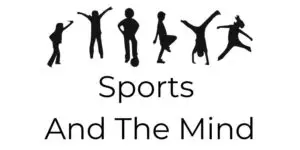*This post may contain affiliate links. As an Amazon Associate we earn from qualifying purchases.
Research Results for Coping With Pain
German researchers primarily studied two known techniques for pain management:
- Distraction: The ability to shift attention away from the painful stimulation.
- Self-Talk, otherwise known as Cognitive Restructuring: Saying to yourself, “This does not hurt.”
Then they studied one unknown and less-understood technique for pain management:
- Acceptance: The ability to deal with thoughts head-on and name them, rather than trying to ignore or push negative thoughts away.
The findings were unexpected: accepting a state of acute pain allows a performer to best tolerate pain, while distraction and self-talk both lowered pain intensity but did NOT improve pain tolerance. In our book, Mindfulness and Sport Psychology for Athletes, we describe the 3 A’s of mindfulness:
- Awareness
- Acceptance
- Action
 What the researchers discovered is that acceptance, a foundation for mindfulness, is the most successful way to handle and cope with pain. This means that in the midst of a training or performance, naming the pain means accepting that you are in pain. Mentally what this does is it ends any chance of an “in-your-head argument” and sheds light on the truth of the moment. Simply saying in your mind, “This hurts. I feel pain!” puts your mind at rest and allows you to tolerate the pain in the moment.
What the researchers discovered is that acceptance, a foundation for mindfulness, is the most successful way to handle and cope with pain. This means that in the midst of a training or performance, naming the pain means accepting that you are in pain. Mentally what this does is it ends any chance of an “in-your-head argument” and sheds light on the truth of the moment. Simply saying in your mind, “This hurts. I feel pain!” puts your mind at rest and allows you to tolerate the pain in the moment.
In contrast, if during a training or performance you were to manage your pain by distraction or self-talk, the intensity of the pain may lessen, but your fear of tolerating pain will remain ever-present, setting the stage for wasting mental energy on an “in-your-head argument”.
Here is an example to explain this idea:
Imagine you are in a kayak paddling against (or up) the current of a river. This takes a great deal of energy and the actual movement up the river is minimal. Now, imagine that you turn the kayak to face down stream (or with the current). Your energy output decreases and the actual movement down river is much greater with less output. This is how the mind works in  relationship to our thoughts.
relationship to our thoughts.
This example highlights the effect of acceptance or naming your thoughts when coping and dealing with pain. Paddling downstream is facing your pain in the present moment and by naming the pain you align with your brain, thus increasing your ability to tolerate pain. Distraction and self-talk are equivalent to paddling upstream. They serve a purpose to decrease pain intensity, but are less effective to reducing your ability to tolerate pain long term.
Mindful practice, with regular training, allow us to have space to pause before reacting. We cannot ignore pain and thoughts of pain, but we can name the pain and accept the moment as it is. Dealing with our thoughts and sensations in the moment supports mental training and provides a proven mechanism to enhance performance.

